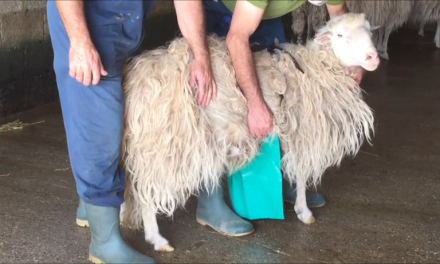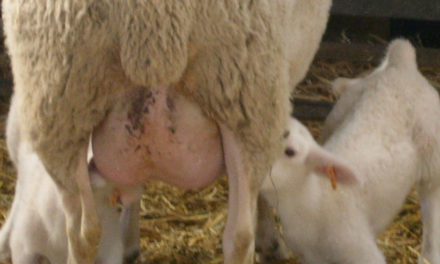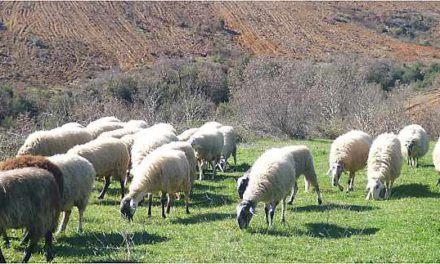This post is also available in:
![]()
![]()
![]()
![]()
![]()
![]()
Well ventilated sheepsheds
Solution name: Well ventilated sheepsheds
Aim: The atmosphere in the building depends on the ventilation system. This factor has an impact on flock performance and health problems.
The ventilation system of the sheep shed is linked to three factors:
– temperature control
– moisture removal
– evacuation of gases
When controlled, these factors allow better animal performance, maintenance of good animal immunity and help avoid major health problems (pneumonia, coccidiosis, etc.). Air in the sheep shed must circulate and renew itself whilst avoiding “draughts”. The sheep shed can be ventilated in two ways: by thermal effect, known as static ventilation, or by mechanical ventilation with extractors.
Ventilation of the buildings must be considered for all seasons. Every year during summer, peaks in temperature become more and more frequent. To maintain a comfortable temperature for the animals and staff in the sheep shed during heat waves, buildings need to be adapted conveniently. Reducing solar radiation and favouring natural ventilation with very open buildings are interesting possibilities.
How to implement it:
You can use two systems:
Static ventilation
The outside air naturally enters the building, heats up in contact with the animals, rises towards the open roof ridge generating a chimney effect and driving the moisture and gas laden air towards the outside. That will complement the ventilating effect of the wind.
This heating phenomena is enhanced when the building is insulated under the roof.
For a permanent building of <18m wide

1- The air inlets are located on the long panels, more than 2m from the ground Three systems are used: a windbreak netting, openwork cladding and offset cladding
2- Air exits the open ridge on the length of the building, apart from the first on the gable which will be closed. If possible, provide an opening of 5 to 10 cm with a windbreak ridge.
Windbreak nets
There is a wide range of windbreak nets. The net needs to be set up and adapted depending on the surface to be cladded (porosity, luminosity) and its maneuverability (removable, rollable, fixed). In all cases and to prevent clogging, it is required to clean it regularly.
Openwork wooden cladding
This is reserved for the lowland and upland areas from up to 500 m altitude.
To ensure a good life span, it is recommended to protect the wood used for openwork cladding, either before (autoclave treated wood) or after installation.
Offset cladding
The translucent part of the top of the long section (often 1 m) must descend on the cladding by at least 40 cm in order to direct the air towards the ridge and prevent the wind from entering directly into the sheep shed. The offset should be 5 to 10 cm, with the possibility of regulating the air intake with an articulated board system.
The particular case of tunnels.
For tunnels, there are different cases depending on their length
– Tunnels < 25 m long
Ventilation can be regulated by a windbreak net on the top gable crescent, provided that the tunnel is oriented towards the prevailing winds and has a small slope along its length. If this is not the case, use the method for tunnels > 25 m.
– Tunnels from 25 m to 35 m
Provide air intake through the gable tops with an adjustable pivot frame at each gable. The air exits via adjustable skylights. The total length of the skylights should be at least 25% of the length of the tunnel.
– Tunnels > 35 m
Mechanical ventilation with extractors on the ridge is required.
Mechanical ventilation
To maintain desired temperature, the mechanical ventilation with air extractors is equipped with a thermal regulator. As the temperature rises, the flow rate of the extractors increases. Thus, with no air intake, the building is effectively airtight. Air extractors are used in old buildings, long tunnels and buildings of > 18 m width. In some cases, only dynamic ventilation can provide a satisfactory ambiance. This is the case of barge systems with hay stored above the animals. This system is also used in lamb fattening units, as this category of animal is particularly sensitive to pathogenic factors, and therefore to temperature and humidity conditions.
Shelt-air, the app that adds atmosphere to the building!
Shelt-air is a decision support tool that enables you to size ventilation openings in just a few clicks. Shelt-air relies on the latest recommendations for natural ventilation of buildings for cows, sheep, goats and horses. Shelt-air is available as an online edition as well as a smartphone app.
For more on Shelt-Air: www.shelt-air.com. Video presentation: https://vimeo.com/497185541

Topic: Health / management
Production: Dairy / Meat
Animal Category: Adult / Lamb / Replacement
Issues: Sheep shed management (e.g. ventilation, temperature, space/ewe,…), Respiratory problems (e.g. pneumonia, coughing, breathing noise, etc.)
Level of Solution: Practical
Country: France
Expected benefits
Germs love high temperatures and humidity. The aim is to ensure that these two criteria are as similar as possible inside and outside the building.
Cost Benefit analysis
Allowing a better sanitary status, a good ventilation of the sheep shed will reduce the use and the costs of medicines and will increase the production per ewe. Those benefits are not measurable and depend of the farm and the local context. In France, the over cost for an adjustable offset cladding regarding a classical cladding is approximately 55€ per ewe housed.
Sustainability analysis
Increasing the production per ewe, a good ventilation will allow a reduction of the environmental impact (GHG especially) per unit of production and a better feed efficiency. Regarding the ammoniac production, a too strong ventilation can increase the ammoniac production of the manure in the shed, transferred in the atmosphere.
Improving the health of the flock, a good ventilation will improve the welfare of the animals. The reduction of the medicines will participate to a better image of sheep farming and a better social acceptance.







